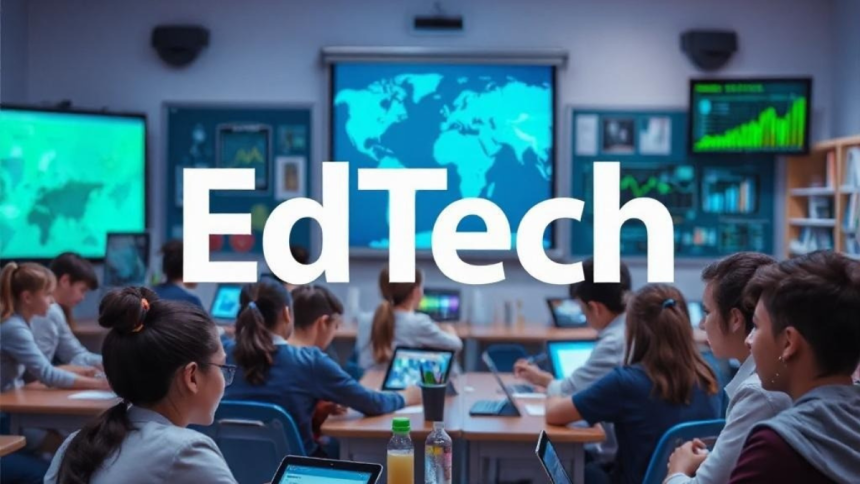The rise of EdTech has transformed how English is taught worldwide, expanding opportunities beyond traditional classrooms. Digital tools, online platforms, and virtual learning environments have made English education more accessible, creating a surge in global demand for qualified instructors.
This demand has unexpectedly driven the need for certified English teachers, particularly those with specialized training like a TEFL course. Technology alone cannot replace the expertise and guidance that certified educators provide, especially as learners seek effective, personalized instruction in increasingly digital settings.
EdTech continues to shape new pathways, but the foundation remains strong in well-trained teachers who can navigate both language and technology. Teachers equipped with proper credentials are essential to meet the challenges posed by these evolving methods and global learning needs.
EdTech Transformations and the Global Surge in Certified English Teachers
The integration of educational technology into English language teaching has expanded global opportunities for certified English teachers. Innovations in digital tools and teaching platforms have fueled demand, while new technologies reshape traditional classroom dynamics and pedagogical approaches.
Drivers of Demand for Certified English Teachers
The global increase in demand for certified English teachers stems from several factors. Growing recognition of English proficiency as essential for employment and cultural exchange drives language learning worldwide. Countries invest more in education sectors aiming to meet these needs.
Certification, such as from TEFL courses, assures instructional quality and meets institutional standards. Employers prefer certified teachers who can effectively navigate modern teaching environments that blend technology and pedagogy. This demand has been intensified as online and hybrid models require adaptable, skilled educators to maintain teaching quality.
Technological Innovation in Language Classrooms
Technological advances have transformed language classrooms by introducing diverse multimedia, interactive applications, and digital assessment tools. These resources create immersive and engaging learning experiences vital for mastering a second language.
Teachers now use platforms that support game-based learning, virtual reality, and personalized digital content. These innovations improve student motivation and accommodate different learning styles. The shift towards digitally supported instruction calls for educators proficient in both language teaching and technology use.
The Impact of Online Learning on Global ELT
Online learning has removed geographic barriers, enabling certified English teachers to reach students worldwide. Virtual classrooms and tutoring platforms offer flexible schedules and personalized instruction, meeting varied learner demands.
This expansion creates opportunities for teachers to specialize and access broader audiences. It also requires adaptation in course delivery and management, emphasizing technological competence alongside traditional ELT methods. Online formats promote inclusivity by addressing the digital divide through accessible EdTech tools.
ChatGPT and Artificial Intelligence in English Language Teaching
AI tools like ChatGPT are increasingly incorporated in English language teaching, offering new pedagogical possibilities. They provide instant feedback, generate learning materials, and simulate conversational practice, enhancing student engagement.
Teachers view AI as a supplementary resource that supports differentiated instruction but recognize challenges in maintaining human interaction and critical thinking development. Incorporating AI requires educators to balance technology use while preserving effective, student-centered teaching strategies in language classrooms.
Future-Proof Skills, Certification, and Teaching Strategies for Modern English Educators
Modern English teachers require a blend of certifications, active professional development, and innovative teaching methods to remain effective. Their ability to foster learner autonomy, enhance language skills, and incorporate cultural understanding is crucial in meeting contemporary educational demands.
Professional Development and TESOL Certification
TESOL certification remains a foundational credential, validating a teacher’s competence in English language instruction and enhancing job prospects worldwide. Continuous professional development alongside certification keeps educators updated on pedagogical advancements and digital tools.
Ongoing training often includes workshops on digital literacy and hybrid teaching methods, reflecting the rise of EdTech. These updates equip teachers to deliver lessons effectively in both physical and virtual classrooms. Certification programs focusing on competency-based education emphasize practical skills, preparing teachers for 21st-century challenges by blending theory and applied knowledge.
Evolving Teaching Strategies and Task-Based Learning
Task-based learning (TBL) positions real-world language use at the center of instruction. This approach fosters engagement by prioritizing meaningful communication over rote grammar drills.
Modern teaching strategies integrate TBL with digital resources, enabling interactive, learner-centered environments. Teachers guide students through problem-solving tasks and collaborative projects that simulate authentic language contexts. These strategies support critical thinking and adaptability, essential for learners to succeed inside and outside the classroom.
Enhancing Language Skills and Learner Autonomy
Developing core language skills—listening, speaking, reading, and writing—is crucial, but equally important is nurturing learner autonomy. Empowered students take responsibility for their learning, improving motivation and long-term retention.
Teachers employ techniques such as self-assessment, peer feedback, and personalized learning plans. Digital platforms also support independent study by offering tailored exercises and instant feedback. This approach aligns with 21st-century competencies, equipping learners to adapt to diverse linguistic and cultural environments.
Cultural Awareness and Thematic Analysis in English Language Learning
Integrating cultural awareness into lesson plans enriches language instruction by connecting language use with social and cultural contexts. Thematic analysis helps teachers organize content around relevant themes, making lessons more relatable and engaging.
Teachers can design curricula around global issues, traditions, or literature to deepen students’ cultural understanding. This method promotes intercultural competence, an essential skill in today’s interconnected world. It also encourages critical thinking by prompting learners to compare and reflect on different perspectives through language.
Lynn Martelli is an editor at Readability. She received her MFA in Creative Writing from Antioch University and has worked as an editor for over 10 years. Lynn has edited a wide variety of books, including fiction, non-fiction, memoirs, and more. In her free time, Lynn enjoys reading, writing, and spending time with her family and friends.















